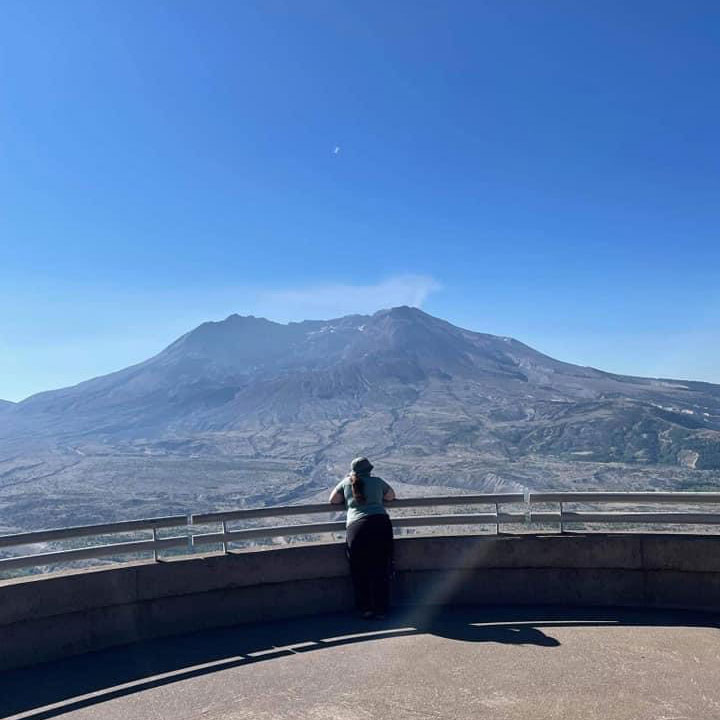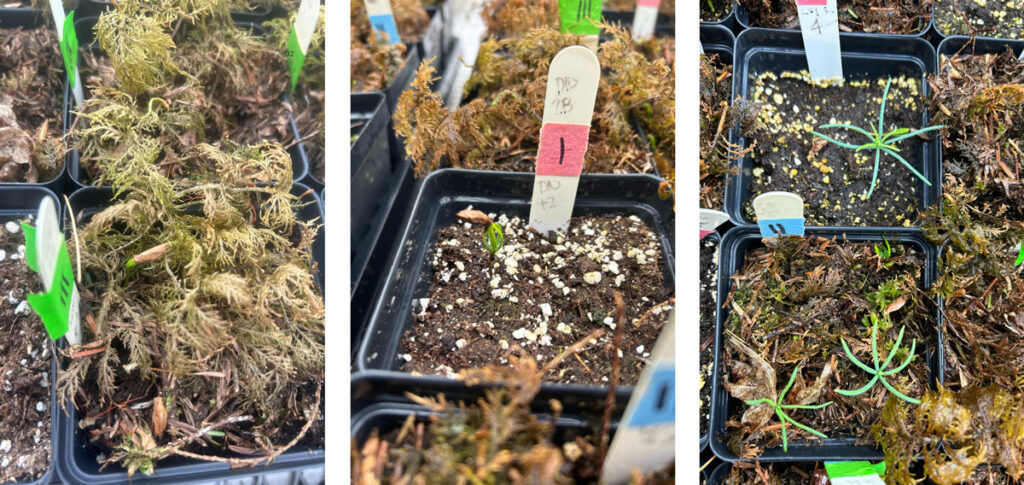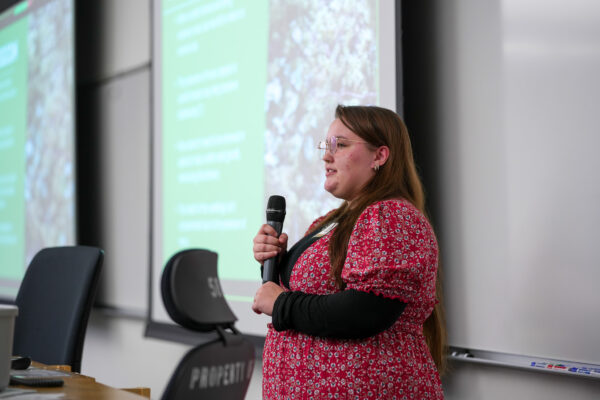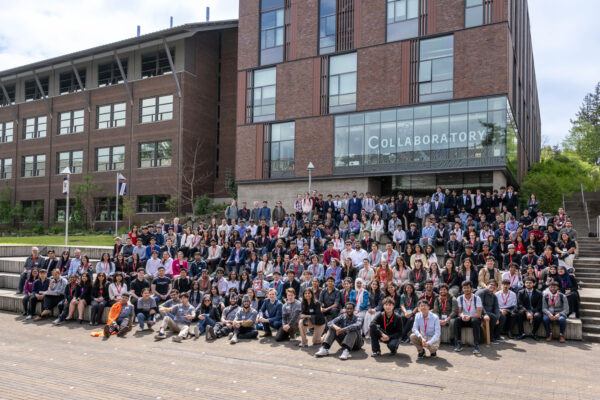Ashley Linkem said that as a child, whenever she wanted to go on an adventure, she and her father would head for the water. Rather than reaching for goggles and heading to the nearest swimming pool as one might suspect, the pair would grab a kayak or canoe and head to a lake or a river.
“Because of my dad, I have been spending time in nature since I was a little kid,” she recalled. “He’s the reason I became interested in and am passionate about the outdoors.”
By the time Linkem was a sophomore in high school, she was determined to turn that passion into a profession. She spent the following summer at Mount St. Helens, conducting ecological research alongside professionals. “That was when it all clicked for me,” she said. “By the end of that summer, I knew I wanted to go into restoration science.”
Seven years later, in December 2023, Linkem graduated from the University of Washington Bothell with a degree in Conservation & Restoration Science. For her capstone project, she spent the past year researching the ecological role mosses play in conifer seed germination and establishment.
Moss vs. soil
For those who may be unfamiliar, seed germination is the process by which a plant grows from a seed. It is considered established when it has grown enough roots to gather the water and nutrients it needs from the surrounding soil.

Conifers are trees that bear their seeds in cones — hence the name conifer. They are the foundation of many forests, and in addition to the shelter and food they provide for wildlife, these trees play an important role globally by sequestering carbon. According to the International Union for Conservation of Nature, 34% of conifer trees are threatened with extinction.
Hoping to both preserve and repopulate conifers, Linkem decided to see if moss — a natural resource present in all forests — could be used in conservation efforts. She explained that unlike most plants, moss does not have a vascular system to carry water and nutrients through its tissues. Instead, moss cells absorb water and nutrients directly from the environment. “The structure of moss made me wonder if conifers would grow faster or stronger if moss was included in the tree’s soil,” she said.
In her pursuit for answers, Linkem received a $3,000 Founders Fellow award supported by the UW Bothell Founders Endowed Fellowship and a $3,000 scholarship from the Seattle chapter of the Association for Women in Science. “I’m incredibly grateful for the opportunity and that I have been able to do this,” she said. “Growing up, it was always a dream of my mine to complete my own research project, one that I felt was meaningful.
“I think about it all the time — just how amazing it is that AWIS and UW Bothell granted me these awards and put their faith in me.”
Trials of treatments
Linkem’s first step was to research mosses and select which type to use in her study. She decided on feather moss, which is commonly found in the understory of moist woods and often forms mats or carpets on the forest floor. “The species of feather moss I chose is one often accompanied by noble fir in late-stage forests,” she explained. “I wanted to be sure the moss I was studying was one where my results would be the most realistic.”
Next, Linkem planted 324 conifer seeds at Sarah Simonds Green Conservatory, a 1,600-square-foot greenhouse located on campus. She devised three different treatments and planted 108 seeds per treatment plan. “I called them treatments, but there was nothing actually treated,” she said. “It was just the difference in moss.”
The first treatment had no moss in the pot, just soil. “This was the baseline that gave me something to compare the other treatments to,” she said. The second treatment contained crushed moss on top of the soil, and the third treatment contained an intact moss bed, also on top of the soil.
After planting, Linkem nurtured and monitored her conifers for four months. This involved watering the plants four or five times per week in addition to acquiring weekly measurements. “It was quite a challenge commuting to and from Bothell that many times since I live up in Lake Stevens,” she said, “but it was well worth the drive to get the results.”

People and the world
When it came time to analyze the data, Linkem wanted to see if there was a statistical difference in the average height of the trees as well as their rate of growth. “I used a ruler to measure in centimeters the vertical growth once the tree had been established, while also recording the number of germinated trees,” she explained.
Linkem also counted the number of pine needles each tree produced. “It takes a lot longer than you might think to count that many needles,” she said. “They are really tiny, and there are more than 40 needles per tree — and I had 324 trees!”
Linkem recently finished her analyses and concluded that the presence of the moss does not affect the average height, germination time, establishment time or number of needles. “This was quite an interesting find,” she said. “What this means is that in conservation efforts, while moss may be helpful as a seed bank, it doesn’t necessarily need to be added manually when restoring disturbed systems.”
She presented her findings at the School of STEM’s Undergraduate Capstone & Symposium on Dec. 15. “This project has been the best investment in my future,” she said. “We are the leaders of our generation, and we have an opportunity to create more meaningful relationships between our upcoming generations and the world around us.
“I hope that after I graduate, I end up in a career that really creates that dynamic.”
This project has been the best investment in my future. We are the leaders of our generation, and we have an opportunity to create more meaningful relationships between our upcoming generations and the world around us.
Ashley Linkem, Conservation & Restoration Science ’23



